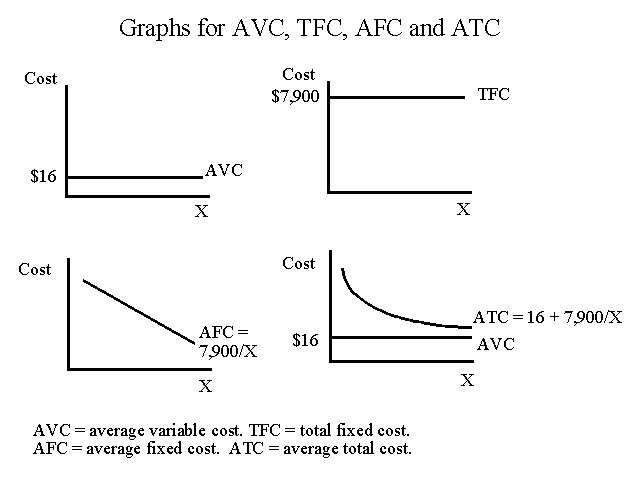
From Management Accounting: Concepts, Techniques & Controversial Issues
Provided by James R. Martin, Ph.D., CMA
Professor Emeritus, University of South Florida
Chapter 8 |
MAAW's Textbook Table of Contents
|
Exhibit 8-6 Comparative Income Statements |
||||||||
| Absorption Costing | Direct Costing | Throughput Costing | ||||||
| Sales | $31,680 | Sales | $31,680 | Sales | $31,680 | |||
| Less COGS:* | Less COGS:** | Less COGS:*** | ||||||
| BFG | 0 | BFG | 0 | BFG | 0 | |||
| COGM | 20,895 | COGM | 14,925 | COGM | 9,950 | |||
| Less EFG | 105 | 20,790 | Less EFG | 75 | 14,850 | Less EFG | 50 | 9,900 |
| Gross profit | 10,890 | Manf margin | 16,830 | Throughput | 21,780 | |||
| Less S&A expense | 2,890 | Less Var S&A | 990 | Less Oper Expense: | ||||
| Operating Income | $8,000 | Contribution margin | 15,840 | Factory | 11,000 | |||
| Less Fixed costs | 7,900 | S&A | 2,890 | 13,890 | ||||
| Operating Income | $7,940 | Operating Income | $7,890 | |||||
* Total manufacturing costs based on absorption costing are $21,000 including $10,000 direct material, $1,000 direct labor, $4,000 variable overhead and $6,000 fixed overhead. Cost of goods manufactured = beginning work in process, plus total manufacturing costs, less ending work in process of (5)($21). Therefore COGM = 0 + $21,000 - $105 = $20,895. There are also five units in ending finished goods @ $21 = $105.
** Total manufacturing costs based on direct costing are $15,000 including direct material of $10,000, direct labor of $1,000 and variable overhead of $4,000. Cost of goods manufactured = beginning work in process, plus total manufacturing costs, less ending work in process of (5)($15). Therefore COGM = 0 + 15,000 - $75 = $14,925. There are also five units in ending finished goods @ $15 = $75.
*** Total manufacturing costs based on throughput costing are $10,000 including only direct material. Cost of goods manufactured = beginning work in process, plus total manufacturing costs, less ending work in process of (5)($10). Therefore COGM = 0 + $10,000 - 50 = $ 9,950. There are also five units in ending finished goods @ $10 = $50.
Note: This problem is designed so that there are no variances to confuse the issue. For example, overhead rates are based on 1,000 units and the company produced 1,000 units, so there is no capacity related variance. The data for this problem are from the backflush example in Chapter 8. The calculations above are based on the procedure illustrated in Chapter 2.